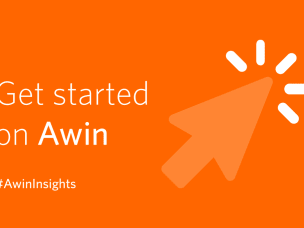How to build brand awareness
Written by Samantha Sherer on 10 minute read
Any business owner should be proud of the brand they have built, but getting your company started is one thing, making sure the world knows about it is another.

What is brand awareness?
Brand awareness describes how familiar consumers are with a brand. In its simplest terms, it can be thought of as popularity. For example, household names like Nike, Coca Cola or Apple have enviable levels of brand awareness, but even with a fraction of that audience a small business can achieve great things. Awareness is deeper than basic recognition — it’s one thing to know what an Apple product looks like, but another to have the awareness of why it's a worthwhile purchase compared to competitors. Brand awareness campaigns aim to inform your would-be customers of why your brand is better than others.
What does brand awareness do?
A good brand awareness strategy does more than just make your brand seem trendy. Acknowledgment of your brand, even if that has not yet evolved into direct engagement, helps in several ways, including:
Building trust
It’s only natural that we trust in things that we know. While customers may not be intimately familiar with your brand, just knowing of you helps build trust. You’re no longer a complete unknown, mystery company, but a potential destination for their next purchase. Establishing yourself in a customer's mind in this way is one of the core tenets of advertising, and the reason why you likely trust brands you’ve never even used.
Helping you stand out
It’s relatively unlikely that the product or service your business offers is completely unique or the first of its kind — things rarely are. Instead, people typically elevate one product over the other because of brand. Think of Coke and the hundreds of duplicate drinks that exist and haven’t come close to knocking it off its top spot. Coke has elevated itself to more than a drink, it’s a brand. The same goes for even simple things — a makeup sponge pales in comparison to one that is branded as the Beauty Blender, a supermarket brand ice cream doesn’t offer the same appeal as ice cream from Ben & Jerry’s. .
Giving you an identity
A product or a service is not a brand and as fantastic as your offering may be, people look to brands to better understand you and your business as a whole. Just think of why you choose one cell phone manufacturer over the other when the primary functions and features are essentially the same. A brand is something people can create meaningful attachments to and that helps them pick you over your closest competitor. A brand awareness campaign helps your brand achieve this.
Inspiring loyalty
A well-crafted brand is like a friend, one who customers trust more and more with each interaction. Loyal customers are valuable customers, spending 67% more than new customers, so creating something beyond a product they can invest in is incredibly beneficial in the long run. In terms of business function, working to increase brand awareness can also help attract new talent, as you’re already known to candidates.
How can a company increase brand awareness?
You can increase brand awareness in many ways, but one of the most important things you should do first of all is make sure your brand is established. Your brand is more than a logo or a color scheme, it’s a whole identity. Don’t act as a company, act as a person - as the people behind the brand who strive to deliver for their customers. This can include:
How you talk
Just look at Wendy’s who dropped its corporate identity to reveal an everyday, extraordinarily witty Twitter user. How you talk to your customers reflects how they can expect to be treated by you — is it warm, human, approachable? Or is it flat, generic and forgettable? There’s no need to push yourself to be funny if that’s not what your brand is about, but the key thing is that you do know what your brand should sound like and that you always keep this tone of voice in mind.
How you think
In the age of social media, customers need to get an insight into your brand’s values and thinking relatively quickly on your profiles and pages. And customers will naturally want to align with brands that think the same way they do. People value authenticity, so are you being genuine in your social media posts? Are you truthful in your claims, not just for what your product or service can do but on the values you claim to have? There have been plenty of cases of backlash where a brand’s declared values clearly don’t reflect the truth.
How you tell your story
Many brands have similar origins in terms of logistics, but the way that story is what can make your brand shine. Brands like Bumble have helped their story shape who they are and help them stand out as far more than just their offering. Your story doesn’t have to be hugely dramatic, but it does need to reflect your passions. If you champion a greener fashion solution, your story can reflect your personal, genuine dissatisfaction at the lack of eco-friendly options and demonstrate your passion and commitment. If your service is online security, show how you understand that the average user may not know how digital security works but should still be able to benefit from the best solution.
How you look
Some brands like Michelin and Disney have become inseparable from their mascots, while others like Dove have made ‘true beauty’ the face of their brand. These ‘characters’ are a shortcut for brand awareness, giving people a visual to remember you by as well as helping catch their eye in the first place.
How to attract customers to your brand ?
Having a strong identity established is a vital part of any brand awareness strategy, but there are several functional ways you can attract customers to you as well, including:
Offering an experience
The pop-up shop has proven itself to be a powerful tool for businesses big and small. It’s a perfect face-to-face way to let your customers experience why you are different from your competitors. As well as this, it attracts new customers drawn to the limited-edition experience of a pop-up. But even if pop-ups aren’t in your budget, there are plenty of ways to tap into the power of omnichannel marketing, including a strong social media presence combined with a high-quality website and a solid customer support offering.
Giveaways
You can generate brand awareness with a small budget by giving away branded items with each order or as a special offer. Think tote bags and keyrings, everyday items your customers will be using without a second thought. Running giveaways for more tempting prizes like products or a free trial can also help generate buzz on social media and grow your follower count if a follow and a mention are the method of entry.
Sponsorship
The power of sponsorships is nothing new, and you don’t have to be a big business to benefit from this classic brand awareness strategy. Sponsorships can start as small as your local school, sports club or charity event, and still reap the rewards of a relatively large audience reach. In the age of social media, though, sponsorship more often takes the form of collaboration with influencers, more on that below.
The power of collaboration
Collabs are everywhere nowadays, and that’s because they work. Collaboration gives you several benefits, such as:
- You both gain a new audience in each other’s customer base
- Your credibility within each customer base grows, as the brand they trust now also trusts you
- It helps you diversify, aligning with brands who offer something different to you
- It’s cheaper than solo marketing — 25x cheaper, in fact.
Generally speaking, collaboration is most commonly with a fellow brand or with an influencer.
Collaborating with brands
Collaborating with brands has many benefits. For one, you're combining the power of two companies — that’s double the marketing expertise and experience. For another, you have a whole new well-established customer base you can reach out to. The trick to brand collaboration is finding common ground, especially if you’ve opted for a brand that doesn’t immediately make sense to your customers. But even this can be a good thing, provided your collaboration campaign is well-considered. The concept of a supposedly ‘weird’ brand match up can create as much buzz as the collab itself. Myprotein’s brand partnership is a great example of how collaborating with another retailer offers plenty of mutual benefits. By creating a rewards program with UK start up Simply Cook, Myprotein was able to deliver more to customers but create an optimum platform for advertising opportunities, building a portfolio of professional relationships.
Collaborate with influencers
Compared to brands, it can seem like your average social media influencer has less to offer. They don’t, after all, have a dozen-man strong marketing team (unless you are aiming for mega-influencers like the Kardashians) or awareness of how a retail business should run. But all this is precisely why creators are so successful. They represent the customer, the everyday person who experiences products and services just like anyone else. And this relatability is clear in the level of trust they inspire — a massive 94% of us trust influencer opinions more than friends or family when it comes to purchases. Influencers, whether they are Instagram personalities or YouTube influencers, have also built their own followings by being themselves and doing it consistently, and consistent authenticity is key to success. It’s no secret that brands want to tap into part of that magic; it’s why the influencer marketing industry was worth over $13.8 billion in 2021.
How to measure brand awareness
Once your brand awareness efforts are underway, it’s important to keep an eye on them. Here’s how to measure your performance and overall success:
Site traffic
Has the number of visitors to your site improved? Check to see exactly where this is coming from and decide if your social media channels might need a bit more help, or if it’s a sponsored post from an influencer that did well can you use this approach again. You should also check how direct traffic is performing — that means how many customers have typed your URL into their browser. This is an excellent metric for brand awareness as it clearly shows how many people remember your brand name and site from the top of their head.
Social channels
How are your follower counts looking? Do people engage, like and share your posts? If your followers are growing, then it's a good sign your brand awareness is, too.
Google alerts
This will allow you to be notified any time your brand is mentioned online. At first, this may seem confined to your own channels, but once it starts to grow, you’ll be able to see how awareness of your brand is spreading throughout the internet.
Surveys
Surveys still have a place in measuring customer interest, so try sending out one that inquiries about brand awareness. There are multiple tools that allow you to easily create a survey and an audience to send it to, so you can segment your customers down to whichever demographic you are most interested in.
How Awin can help
With over one million different partnership opportunities, Awin offers a quick and easy way to find and connect with publishers and brands who can help you reach a new audience through collaboration. Grow your business online and reach your target customers with Awin here.



